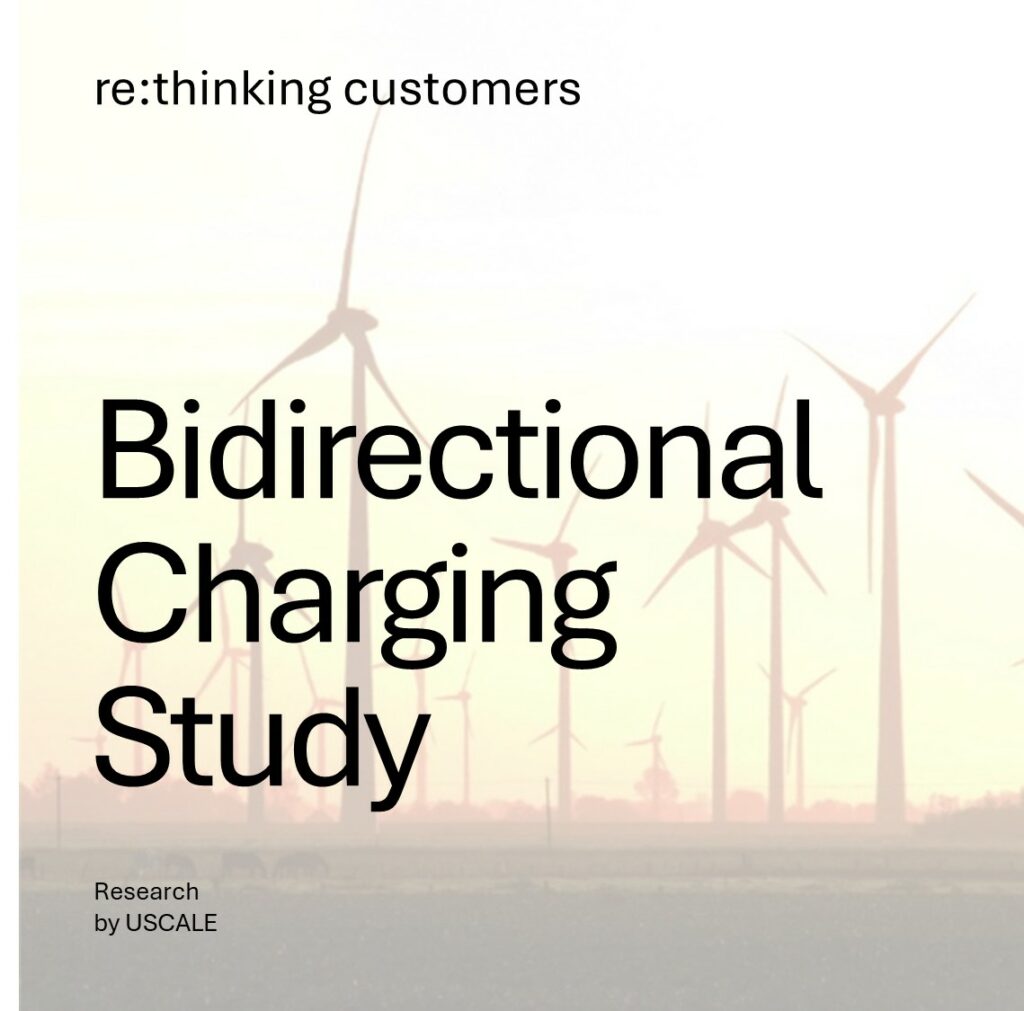BIDIRECTIONAL Charging study 2025

Usage drivers and barriers of BIDIRECTIONAL charging
The study shows the willingness to use and the biggest usage drivers and baThe study shows the willingness to use and the biggest drivers and barriers to use of the most important variants of bidirectional charging (V2X):
- Vehicle-To-Home (V2H)
- Vehicle-To-Grid (V2G)
- Vehicle-To-Business (V2B)
- Interest in V2L, V2V
In addition to willingness to use, the study examines expectations regarding incentives, user confidence in the various providers, and much more.
For the Bidirectional Charging Study, a total of 2,368 drivers in Germany were surveyed in April 2025.
- Among those surveyed were 1,862 EV drivers, including 859 pioneers and 1,003 early adopters.
- An additional 501 combustion engine drivers were surveyed for reference purposes.
The results are split throughout the study into
- EV drivers: by pioneers and early adopters, as well as by owners of properties with and without PV systems at home
- ICE drivers: by EV adoption probability
Subscribers to the study can perform further splits in the interactive dashboard with integrated analysis tool.
Contents and added value of the Bidirectional Charging Study
Content of the Bidirectional Charging Study
Segmentation (charging and driving behaviour, living situation, demographics):
- Sociodemographic data (age, gender, etc.)
- Living situation (place of residence, single-family home/multi-family home, personal parking situation)
- Car (make, model, company car/private car, charging costs covered by employer, length of EV experience)
- Driving behaviour (mileage per working day and per year)
- Charging locations
- Charging occasions, charging type
- Charging technology at home (wall charger, battery storage, PV system, energy management, etc.), planned purchase of additional charging technology, use of HEMS
- Presence at home on weekdays
- Electricity tariffs at home
Special for the ICE reference group:
- Planned next car purchase
- Willingness to adopt an EV
- Priority drivers for EV purchase
- Priority barriers to EV purchase
Vehicle-to-home (V2H):
- Determination of product-market fit for vehicle-to-home (V2H):
- Achievable target group per segment
- Priority usage drivers per segment
- Prioritised usage barriers per segment
- Willingness to invest:
- Willingness to invest in V2H charging technology (according to the Gabor-Granger method)
- Initial assessment of revenue or savings potential
- Relevance of bidirectional charging capability of the car when purchasing the next car
- Mental accounting for investments in V2H charging technology
- Integration:
- Criteria / most important aspect when choosing a solution partner
- Trust in various solution partners
- Own planning requirements
- Interest in ‘everything from a single source’ vs. ‘individual purchase’
- Reasons and preferred providers for ‘everything from a single source’
- Reasons and preferred providers for ‘individual purchase’ (per component)
- Reasons for choosing a provider (per provider)
- Preferred operation of integrated charging solutions
- Accepted discharge limit
Vehicle-to-grid (V2G):
- Determining the product-market fit for vehicle-to-grid (V2G):
- Achievable target group per segment
- Prioritised usage drivers per segment
- Prioritised usage barriers per segment
- Remuneration expectations:
- Remuneration expectations for V2G (according to the Gabor-Granger method)
- Initial assessment of revenue potential
- Willingness to adapt own charging behaviour
- Parking behaviour (parking times at home on weekdays)
- Current charging behaviour with wall chargers
- Perceived additional effort required for charging
- Possible compensation for charging effort
- Integration:
- Criteria/most important aspect when choosing a solution partner
- Trust in various solution partners
- Own planning requirements
- Interest in ‘everything from a single source’ vs. ‘individual purchase’
- Reasons and preferred providers for ‘everything from a single source’
- Reasons and preferred providers for ‘individual purchase’ (per component)
- Reasons for choosing a provider (per provider)
- Preferred operation of integrated charging solutions
- Accepted discharge limit
Vehicle-To-Business (V2B):
- Determining the product-market fit for vehicle-to-business (V2B):
- Achievable target group per segment
- Prioritised usage drivers per segment
- Prioritised usage barriers per segment
- Remuneration expectations:
- Remuneration expectations for V2B (according to the Gabor-Granger method)
- Initial assessment of revenue potential
- Accepted discharge limit
Vehicle-to-Load / Vehicle-to-Vehicle:
- Basic interest in V2L and V2V
- Important use cases for V2L and V2V
On request:
DC charging at home (from Smart Charging study, Nov. 2023)
Target group of the survey
The study surveyed drivers of fully battery-powered electric vehicles. For each use case, only EV drivers who also use the corresponding charging location themselves were surveyed. This resulted in the following samples:
- Vehicle-to-home (V2H): N = 785
- Vehicle-to-grid (V2G): N = 764
- Vehicle-to-business (charging at work) (V2B): N = 789
- Bidirectional charging (V2L, V2V): N = 1,862
Added value and benefits for after-sales managers, dealers and dealer trainers and hotline operators
The study shows technology providers (hardware and software) and providers of services for bidirectional charging which technology experiences the highest acceptance and thus sales expectations with which target group. Additionally, providers also learn which prioritised levers they can use to increase the acceptance and thus the sales of their offers and which messages they can use to best reach their target customers.
The study offers business developers the basis for both calculating take rates and business cases.
The study shows product developers and product managers how which function can be integrated to what extent in order to continue to be accepted as “generic” from the user’s point of view. I.e.: Should car manufacturers offer energy management systems for the home? Do customers see the control of bidirectional charging technologies with the energy supplier, the home technology provider or the vehicle manufacturer?
USCALE focus studies: User studies on electromobility
Since 2018, USCALE has been systematically surveying EV drivers about their expectations and experiences at all touchpoints of the e-mobile customer journey. Additionally, you can find an overview of all USCALE focus studies HERE.
We also show extracts from other studies in the LinkedIn articles by USCALE and Axel Sprenger, our company founder.
If you have any questions, please contact us at contact@uscale.digital.
